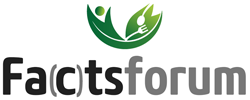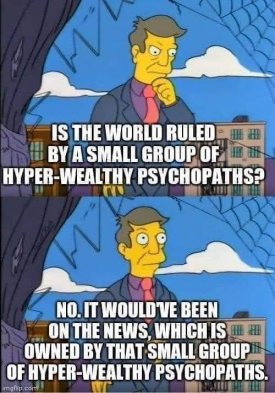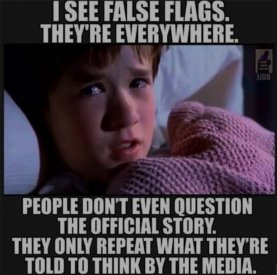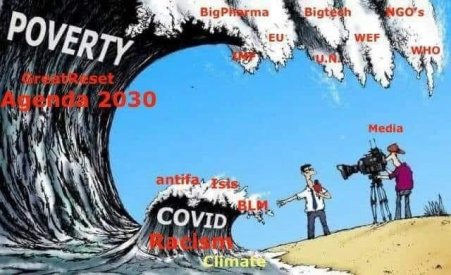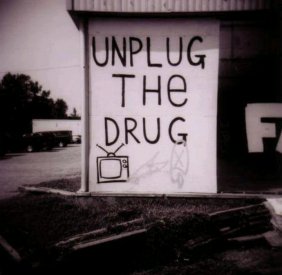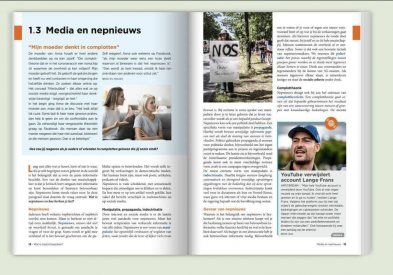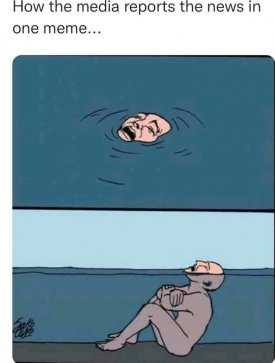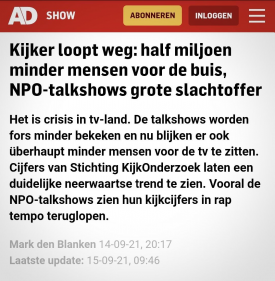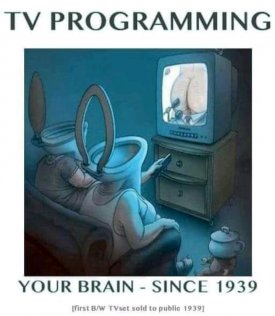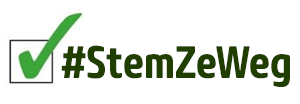Installeer de app
How to install the app on iOS
Follow along with the video below to see how to install our site as a web app on your home screen.
Opmerking: This feature may not be available in some browsers.
Je gebruikt een verouderde webbrowser. Het kan mogelijk deze of andere websites niet correct weergeven.
Het is raadzaam om je webbrowser te upgraden of een browser zoals Microsoft Edge of Google Chrome te gebruiken.
Het is raadzaam om je webbrowser te upgraden of een browser zoals Microsoft Edge of Google Chrome te gebruiken.
Melkmeisje
Well-known member
er is ook een video opname van haar. Kan zijn dat ik die hier al een keer heb geplaatst.Carla Peters is echt fantastisch en laat zich de mond niet snoeren !
Gevonden:
Wida
Well-known member
Mainstream aandacht voor MK Ultra + subprojecten en Operation Paperclip.
Een reportage van Argos, werd vanmiddag uitgezonden op de radio.

 www.vpro.nl
www.vpro.nl

 open.spotify.com
open.spotify.com
Een reportage van Argos, werd vanmiddag uitgezonden op de radio.
De War on Terror begon exact twintig jaar geleden. De Verenigde Staten had wraak gezworen voor 9/11 en terrorisme-verdachten werden overgebracht naar geheime CIA-gevangenissen, waar ze werden gemarteld.
Verdachten zouden moeten breken door ze dagenlang wakker te houden, soms wel 180 uur. Of ze werden tientallen keren gewaterboard, in kleine kooien gestopt en soms zelfs ‘rectaal gehydrateerd’ – een eufemisme voor anale verkrachting. In 2014 bekende president Obama publiekelijk dat er gevangenen waren gemarteld. De excessen werden neergezet als incident. Maar is dat wel zo?
Argos interviewt oud-New York Times-journalist Stephen Kinzer over zijn boek Poisoner in Chief - Sidney Gottlieb and the CIA search for mind control. Scheikundige Gottlieb was ten tijde van de Koude Oorlog het brein achter het ultra-geheime programma MK Ultra. Met hulp van wetenschappers voerde hij gruwelijke experimenten uit op gevangenen en andere mensen die niet gemist zouden worden. Het zijn de memo’s van Sidney Gottlieb die de basis vormden voor de ‘verbeterde ondervragingstechnieken’ die de CIA inzette na 9/11.
In de studio vertellen Argos-redacteur Rik Delhaas en mensenrechtendeskundige Quirine Eijkman hoe na 9/11 de bewijzen van mensenrechtenschendingen door de CIA boven water zijn gekomen.

De hardhandige ‘ondervragingstechnieken’ van de CIA
De War on Terror begon exact twintig jaar geleden. De Verenigde Staten had wraak gezworen voor 9/11 en terrorisme-verdachten werden overgebracht naar geheime CIA-gevangenissen, waar ze werden gemarteld.

20 jaar na 9/11: De hardhandige ‘ondervragingstechnieken’ van de CIA
Argos Actueel · Episode
Fries Foar Frijhiid
Well-known member
Mercola over Gates en de 'crisis'
In 2000, everything about Bill Gates’ public persona changed. He morphed from a hardnosed and ruthless technology monopolizer into a soft, fuzzy and incredibly generous philanthropist when he and his wife launched the Bill & Melinda Gates Foundation.
It was a public relations coup meant to clean up his image after a near-brush with annihilation of his company two years earlier. May 18, 1998, the U.S. Justice Department, in collaboration with 20 state attorneys, had filed an antitrust lawsuit against Microsoft. At that time, the company was 23 years old and was ruling the personal computer market. The Seattle Times described the fallout from the antitrust lawsuit:
It was later extended twice and then expired May 12, 2011. The lawsuit had a dramatic effect on “the emergence of an entirely new field called IP (intellectual property) antitrust,” Iowa law professor Herbert Hovenkamp told the Seattle Times.
Later, large sums donated from the foundation made the news multiple times, including $9.5 million to GAVI (Global Alliance for Vaccines), a second $7.5 million to GAVI and $6.8 million to the World Health Organization in 2017.
By June 2020, in the middle of a global pandemic, the Gates Foundation’s donations totaled 45% of WHO’s funding from nongovernmental sources. Once mainstream media’s attention was no longer on Gates’ antitrust activities and focused on the philanthropist actions of the foundation, Gates publicly turned his attention to vaccinating the world, long before COVID-19.
What Gates had discovered was an easy path to political power, allowing him to shape public policy without being elected to office. In other words, favorable headlines could be bought with charitable contributions. One event that Gates has personally supported and participated in was Event 201.
Writing in The Defender, Robert Kennedy Jr. describes the exercise that Gates organized in October 2019. Many high-ranking men and women with governmental authority participated in Event 201, which coincidentally simulated a worldwide pandemic triggered by a novel coronavirus, just months before SARS-CoV-2, the virus that causes COVID-19, changed the world.
They included representatives from the World Economic Forum, the U.S. Centers for Disease Control and Prevention, Johns Hopkins University Population Center, the World Bank, the Chinese government and vaccine maker Johnson & Johnson. During the event, the group developed strategies to control a pandemic, the population and the narrative surrounding the event.
At no time did they investigate using current therapeutic drugs and vitamins or communicating information about building immune systems. Instead, the aim was to develop and distribute patentable antiviral medications and a new wave of vaccines.
As Kennedy reports, Gates spoke to the BBC April 12, 2020, and claimed these types of simulations had not occurred, saying "Now here we are. You know we didn't simulate this; we didn't practice, so both the health policies and economic policies … we find ourselves in uncharted territories."
Yet, videos of the event are available and Johns Hopkins Center for Health Security released a statement naming the Gates Foundation as a partner in sponsoring the pandemic simulation. It seems strange and alarming that a man with the responsibility of running the Gates Foundation and the powerful influence he has over global public policy decisions had forgotten an exercise he organized only six months before the interview. Or was it deception?
The transcript of the fourth simulation shows that the participants discussed communication strategies using dissemination of information and censorship on social media. Communication strategist Hasti Taghi, who works for a major media company and leads strategic initiatives with the World Economic Forum, said:
The issue of gaining public trust to take a vaccine was significant in this simulation, even though the U.S. population is well indoctrinated in the perceived value of annual flu shots and childhood vaccinations. In fact, the Centers for Disease Control and Prevention has a list of 26 different types of vaccines currently in use in the U.S.
In addition to the long list of recommended childhood vaccinations, there are adult vaccines against shingles, tetanus and pneumococcal pneumonia that are routinely given. Why, then, did the global experts in communication and control believe communicating the “right information” would be necessary to “ensure the public trust”?
At each step of the simulation, the global “experts” agreed that information censorship through media platforms would be necessary to control the flow of the “right information” in order for people to willingly follow the leader.
What is interesting about the transcript from Event 201 is that what was planned and shared was frighteningly close to what has happened since January 2020. It may have been a coincidence to predict one or two major public health decisions, but it appears that the group was either phenomenally prophetic or they shaped the decisions and events of 2020 from behind the scenes.
In July 2020, Yale University announced a study of the trigger words and phrases that would have a higher likelihood of promoting an otherwise individualistic society to quietly follow mandates (not laws) to control behavior. The phrases tested were believed to be most successful at conveying feelings about health, helping others and fear.
The hope was to manipulate behavior in such a way that it lowered the governmental risk for riots and dissidence. The study was conducted by Yale University using 4,000 participants who were randomized to receive one of 12 different messages. After the message, they were then evaluated to “compare the reported willingness to get a COVID-19 vaccine at three and six months of it becoming available.”
The primary outcome of the study was to find the right combination of phrases and messaging that would increase the number of people who got the vaccine. The study began July 3, 2020, and the last participant underwent testing by July 8, 2020. To date, the results of the study have not been published.
The president of the U.S. announced in July 2020 that there would be an “overwhelming” vaccine campaign launched by November 2020. In December 2020, the National Institutes of Health released a COVID-19 vaccination communication recommending behavioral and social science actions that might address vaccine hesitancy and increase the number who take the vaccine, including:
It is essential to safeguard your Constitutional rights and liberties against unlawful overreach, and yet many appear to be willing to give up easily. Although the government has a duty to protect the health and welfare of its citizens, this must be balanced against the loss of civil rights and liberties.
We’re currently facing a battle of freedom versus tyranny. For example, multiple studies have demonstrated that long-term lockdowns are clearly not in the public's best interest. Instead, it's tantamount to abuse. And yet many have gone along with these mandates, which were not laws.
It's vital to understand that the vast majority of information you consume in mainstream media is carefully designed propaganda that has been crafted from nearly two decades of personal data collected from you.
Although Yale University undertook the study with 4,000 participants for a COVID-19 messaging campaign, that data had been gathered and collated through your use of social media.
As I have carefully identified in many previous articles, this plan will result in a progressive loss of your freedom and liberty that eventually results in tyranny and slavery. It is crucial to be vigilant and seek the truth so that you can understand how to distinguish between fact and a fictional narrative that promises you liberation but eventually enslaves you.
In 2000, everything about Bill Gates’ public persona changed. He morphed from a hardnosed and ruthless technology monopolizer into a soft, fuzzy and incredibly generous philanthropist when he and his wife launched the Bill & Melinda Gates Foundation.
It was a public relations coup meant to clean up his image after a near-brush with annihilation of his company two years earlier. May 18, 1998, the U.S. Justice Department, in collaboration with 20 state attorneys, had filed an antitrust lawsuit against Microsoft. At that time, the company was 23 years old and was ruling the personal computer market. The Seattle Times described the fallout from the antitrust lawsuit:
How would the world be different today if the company had been split? Yale law professor George Priest described the antitrust lawsuit as “one of the most important antitrust cases of its generation.”4 In 2002, a court settlement placed restrictions on Microsoft to curb some of its practices for five years.“The company barely escaped being split up after it was ruled an unlawful monopolist in 2000 for using its stranglehold on the PC market with its Windows operating system to cripple competitors, such as Netscape’s Navigator Web browser.”
It was later extended twice and then expired May 12, 2011. The lawsuit had a dramatic effect on “the emergence of an entirely new field called IP (intellectual property) antitrust,” Iowa law professor Herbert Hovenkamp told the Seattle Times.
Later, large sums donated from the foundation made the news multiple times, including $9.5 million to GAVI (Global Alliance for Vaccines), a second $7.5 million to GAVI and $6.8 million to the World Health Organization in 2017.
By June 2020, in the middle of a global pandemic, the Gates Foundation’s donations totaled 45% of WHO’s funding from nongovernmental sources. Once mainstream media’s attention was no longer on Gates’ antitrust activities and focused on the philanthropist actions of the foundation, Gates publicly turned his attention to vaccinating the world, long before COVID-19.
Event 201: A Preplanned Pandemic
In a deep dive into the Gates Foundation’s charitable donations, The Nation found there were $250 million in grants to companies where the foundation held corporate stocks, including Novartis, GlaxoSmithKline, Merck, Sanofi and Medtronic. The money was directed at supporting projects “like developing new drugs and health monitoring systems and creating mobile banking services.”What Gates had discovered was an easy path to political power, allowing him to shape public policy without being elected to office. In other words, favorable headlines could be bought with charitable contributions. One event that Gates has personally supported and participated in was Event 201.
Writing in The Defender, Robert Kennedy Jr. describes the exercise that Gates organized in October 2019. Many high-ranking men and women with governmental authority participated in Event 201, which coincidentally simulated a worldwide pandemic triggered by a novel coronavirus, just months before SARS-CoV-2, the virus that causes COVID-19, changed the world.
They included representatives from the World Economic Forum, the U.S. Centers for Disease Control and Prevention, Johns Hopkins University Population Center, the World Bank, the Chinese government and vaccine maker Johnson & Johnson. During the event, the group developed strategies to control a pandemic, the population and the narrative surrounding the event.
At no time did they investigate using current therapeutic drugs and vitamins or communicating information about building immune systems. Instead, the aim was to develop and distribute patentable antiviral medications and a new wave of vaccines.
As Kennedy reports, Gates spoke to the BBC April 12, 2020, and claimed these types of simulations had not occurred, saying "Now here we are. You know we didn't simulate this; we didn't practice, so both the health policies and economic policies … we find ourselves in uncharted territories."
Yet, videos of the event are available and Johns Hopkins Center for Health Security released a statement naming the Gates Foundation as a partner in sponsoring the pandemic simulation. It seems strange and alarming that a man with the responsibility of running the Gates Foundation and the powerful influence he has over global public policy decisions had forgotten an exercise he organized only six months before the interview. Or was it deception?
Uncanny Prediction or Planned Event?
During the pandemic exercise, the global experts “modeled a fictional coronavirus pandemic.” After questions arose about whether the exercise had “predicted the outbreak in China,” Johns Hopkins Center for Health Security released a thinly supported statement, saying:Kennedy characterizes the fourth simulation in Event 201, writing that “the participants primarily focused on planning industry-centric, fear-mongering, police-state strategies for managing an imaginary global coronavirus contagion culminating in mass censorship of social media.”“… the exercise served to highlight preparedness and response challenges that would likely arise in a very severe pandemic … Although our tabletop exercise included a mock novel coronavirus, the inputs we use for modeling the potential impact of that fictional virus are not similar to nCoV-2019.”
The transcript of the fourth simulation shows that the participants discussed communication strategies using dissemination of information and censorship on social media. Communication strategist Hasti Taghi, who works for a major media company and leads strategic initiatives with the World Economic Forum, said:
“So, I think a couple of things we have to consider are even before this began, the anti-vaccine movement was very strong and this is something specifically through social media that has spread.
The question the group undertook wasn’t how to communicate the truth about the vaccine development, manufacture and distribution, but rather how to “communicate the right information to ensure the public has trust in these vaccines that we’re creating?”So, as we do the research to come up with the right vaccines to help prevent the continuation of this, how do we get the right information out there? How do we communicate the right information to ensure that the public has trust in these vaccines that we're creating?”
The issue of gaining public trust to take a vaccine was significant in this simulation, even though the U.S. population is well indoctrinated in the perceived value of annual flu shots and childhood vaccinations. In fact, the Centers for Disease Control and Prevention has a list of 26 different types of vaccines currently in use in the U.S.
In addition to the long list of recommended childhood vaccinations, there are adult vaccines against shingles, tetanus and pneumococcal pneumonia that are routinely given. Why, then, did the global experts in communication and control believe communicating the “right information” would be necessary to “ensure the public trust”?
Group Calls for Social Media Censorship
This was only one of the highly predictive conversations during Event 201 that played out in 2020 as the global COVID-19 pandemic unfolded. George Gao, director-general, Chinese Center for Disease Control and Prevention, predicted:Others agreed with the need for social media censorship as it may pertain to the spread of “disinformation” about the pandemic or vaccines and vaccine injury, without regard to the source. The idea was to remove any information that did not align with the government’s mandates and ideas. Kevin McAleese, who is a communications officer with a Gates-funded agricultural project, said:“By and long, we have more cases in China and also death cases reported. And also, my staff told me that before there's misinformation and there's some belief. People believe, ‘This is a manmade ... some pharmaceutical company made the virus,’ so there's some violations of human ... That is because of this misinformation.”
During the ensuing conversation, Tom Inglesby, director of the Johns Hopkins Center for Health Security, replied, “In this case, do you think governments are at the point where they need to require social media companies to operate in a certain way?''“To me, it is clear countries need to make strong efforts to manage both mis- and disinformation … If the solution means controlling and reducing access to information, I think it’s the right choice.”
At each step of the simulation, the global “experts” agreed that information censorship through media platforms would be necessary to control the flow of the “right information” in order for people to willingly follow the leader.
What is interesting about the transcript from Event 201 is that what was planned and shared was frighteningly close to what has happened since January 2020. It may have been a coincidence to predict one or two major public health decisions, but it appears that the group was either phenomenally prophetic or they shaped the decisions and events of 2020 from behind the scenes.
Framing the Vaccine Message to Trigger Action
From the outside, the driving force behind economically devastating lockdowns, warp speed vaccine development and population control and surveillance strategies has been to “flatten the curve” and lower the death rate of SARS-CoV-2. Yet, as I and others have exposed, when these strategies are analyzed, it’s apparent there is more than what meets the eye.In July 2020, Yale University announced a study of the trigger words and phrases that would have a higher likelihood of promoting an otherwise individualistic society to quietly follow mandates (not laws) to control behavior. The phrases tested were believed to be most successful at conveying feelings about health, helping others and fear.
The hope was to manipulate behavior in such a way that it lowered the governmental risk for riots and dissidence. The study was conducted by Yale University using 4,000 participants who were randomized to receive one of 12 different messages. After the message, they were then evaluated to “compare the reported willingness to get a COVID-19 vaccine at three and six months of it becoming available.”
The primary outcome of the study was to find the right combination of phrases and messaging that would increase the number of people who got the vaccine. The study began July 3, 2020, and the last participant underwent testing by July 8, 2020. To date, the results of the study have not been published.
The president of the U.S. announced in July 2020 that there would be an “overwhelming” vaccine campaign launched by November 2020. In December 2020, the National Institutes of Health released a COVID-19 vaccination communication recommending behavioral and social science actions that might address vaccine hesitancy and increase the number who take the vaccine, including:
- Framing accepting a vaccine as a social norm including “promotional materials that induced peer pressure to vaccinate.”
- Encouraging those who vaccinate to share their positive experience on social media.
- Nudging a person into accepting the vaccine by making it convenient and easy, leveraging electronic portals to send messages and using competition, gamification and incentives to encourage behavioral changes.
- Assessing the values of the target audience and then embedding those values into messages about vaccinations. Examples might include being a protector of the community, building on desires to go back to normal activities or as a way of enacting equality and social justice by protecting vulnerable people.
It’s Time to Speak With One Voice and Fight for Freedom
As I've written before, what we lose as a society when we acquiesce to these mandates and controls will be exponentially harder to get back. One of the freedoms we give away is allowing our thoughts and beliefs to be censored on social media without fighting back.It is essential to safeguard your Constitutional rights and liberties against unlawful overreach, and yet many appear to be willing to give up easily. Although the government has a duty to protect the health and welfare of its citizens, this must be balanced against the loss of civil rights and liberties.
We’re currently facing a battle of freedom versus tyranny. For example, multiple studies have demonstrated that long-term lockdowns are clearly not in the public's best interest. Instead, it's tantamount to abuse. And yet many have gone along with these mandates, which were not laws.
It's vital to understand that the vast majority of information you consume in mainstream media is carefully designed propaganda that has been crafted from nearly two decades of personal data collected from you.
Although Yale University undertook the study with 4,000 participants for a COVID-19 messaging campaign, that data had been gathered and collated through your use of social media.
As I have carefully identified in many previous articles, this plan will result in a progressive loss of your freedom and liberty that eventually results in tyranny and slavery. It is crucial to be vigilant and seek the truth so that you can understand how to distinguish between fact and a fictional narrative that promises you liberation but eventually enslaves you.
Lees dit:

 t.me
t.me
Voor wie dit Telegram-bericht niet kan openen, het gaat om de media in Amerika die vroegen om zielige verhalen van ongevaccineerden die zijn overleden aan COVID, maar werden overweldigd door berichten van mensen die stierven of ernstig letsel hebben overgehouden aan de vaccins!
Mike

We The Media
Voor wie dit Telegram-bericht niet kan openen, het gaat om de media in Amerika die vroegen om zielige verhalen van ongevaccineerden die zijn overleden aan COVID, maar werden overweldigd door berichten van mensen die stierven of ernstig letsel hebben overgehouden aan de vaccins!
Mike
Melkmeisje
Well-known member
Zathras
Well-known member
:quality(80)/cdn-kiosk-api.telegraaf.nl/393c849a-14b9-11ec-aab8-0217670beecd.jpg)
PVV neemt Van Engelshoven onder vuur om Kaag-cartoon
De PVV neemt demissionair Onderwijsminister Ingrid van Engelshoven (D66) onder vuur omdat ze haar afkeur heeft uitgesproken over een spotprent van cartoonist Ruben Oppenheimer, waarin haar D66…
Martin B fileert de hypocrisie van D666
S
Sailor
Guest
Dat valt niet onder lichtpuntjes,,,, eerder een zoeklicht, eindelijk zakken de kijkcijfers, nu de online bezoeken nog naar nulEn nog een lichtpuntje:
Bekijk bijlage 3856
Melkmeisje
Well-known member
en als je denkt dat het al niet gekker kan:

 dissident.one
dissident.one

Duitse lesbrochure beveelt elektroshocks aan tegen heteroseksualiteit - DissidentNL
Op bladzijde 20 van het GEW Baden-Württemberg propagandapamflet staat een vragenlijst, uitgelegd als "Verkort uit: P. Baker, "The Language of Sex: The
 dissident.one
dissident.one
Fries Foar Frijhiid
Well-known member
Vroeger werden vergelijkbare behandelingen aan homoseksuelen voorgeschreven.en als je denkt dat het al niet gekker kan:

Duitse lesbrochure beveelt elektroshocks aan tegen heteroseksualiteit - DissidentNL
Op bladzijde 20 van het GEW Baden-Württemberg propagandapamflet staat een vragenlijst, uitgelegd als "Verkort uit: P. Baker, "The Language of Sex: Thedissident.one
Beide keren is het te zot voor woorden. Respecteer elkaars geaardheid en stop propaganda met betrekking tot seks(ualiteit)/geaardheid.
Fries Foar Frijhiid
Well-known member
Er wordt omschreven wat de DS doet, maar men projecteert op andersdenkenden en mensen die zich los proberen te weken van traditionele maatschappelijke systemen.Bekijk bijlage 3700
ook in de lesboeken kreeg ik net doorgestuurd.
Forum statistieken

